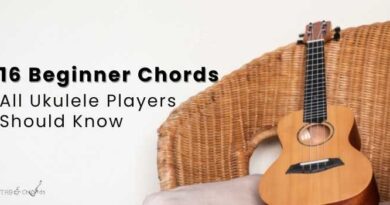Master Guitar Scales With These Simple Tips
If you’ve been playing any length of time at all then I’m sure that you have spent hours practicing scales over and over again, just like every other guitarist does (even your hero!). But there’s no reason why you can’t learn new things about how you play these basic building blocks of music theory. After all, they provide us with an endless source of possibilities when it comes to creating our own melodies and chord progressions.
Here we offer 13 quick tips for mastering scales – from learning some very useful techniques to remembering which scale is best suited to each type of song or situation. So let’s get started…
- Learn Scales One At A Time
We have all been there, trying to learn too many scales at the same time and getting overwhelmed. It’s much better to take things slow and learn one scale at a time until you have it down pat. This way, when you move on to learning new scales, the old ones will be cemented in your mind.
- Start With the Common Scales
Not all scales are created equal in terms of difficulty. If you are a beginner, start with the easier scales and work your way up to the harder ones. This will help prevent frustration and make learning scales a fun, rewarding experience.
Some great beginner scales include the A minor, G major and E minor pentatonic scales. These scales can be used as building blocks for learning other scales and once learned will keep you motivated to continue learning.
- Use Rhythm and Dynamics Correctly
Many people think that playing dynamics means hitting harder and louder. While loudness certainly helps make a passage stand out, sometimes what sounds good dynamically depends entirely upon rhythm and timing. Remember the difference between ‘loud’ and ‘quiet’, and apply it to everything you hear throughout your soloing. Make sure that your dynamic markings aren’t competing against the beat of the song, and focus instead on emphasizing phrasing and articulation (e.g. subtlety).
This makes sense when looking at individual phrases within longer pieces such as songs. As well as helping create smoother transitions, slowing down can help emphasize small details in melody lines, while speeding up can add extra emphasis to short beats.
To help practicing dynamics, you may want to consider a low-watt tube amp. Driving a large tube amp in a home setting is often too loud and can be a real pain to neighbors or family members. But with a low-watt tube amp, you can get the same great tone at lower volumes, perfect for practicing dynamics without disturbing others.
- Practice Scales In Different Keys
One way to really increase your understanding of scales is to practice them in different keys. This will help you develop a better sense of how each scale sounds in different situations.
It can also be helpful to practice scales in opposite positions. For example, if you are comfortable playing a scale in the first position, try practicing it in the seventh position. This will help you develop dexterity and flexibility when moving up and down the fretboard.
- Apply Scales to Songs
Once you have mastered a few scales, start applying them to songs. This is a great way to get more use out of them and to see how they can be applied in a musical context.
You can also experiment with creating your own melodies and chord progressions using scales. This is a great way to develop your songwriting skills and come up with new ideas.
- Repetition Is Key
As with most learning on guitar, learning scales is going to come back to muscle memory. To accomplish this, you need to practice, practice, practice.
The more you play scales, the easier they will become and the better your muscle memory will be. This will result in easier playing and a better overall understanding of scales.
- Use a Metronome
One of the best ways to improve your timing and rhythmic accuracy when practicing scales is to use a metronome. Set the metronome to a slow tempo and start with the first scale.
Gradually increase the tempo as you become more comfortable with the scale. This will help you play in time and develop a better sense of rhythm.
- Use Alternate Picking Techniques
When picking notes on the strings, use alternate fingerpicking rather than regular plectrum picking. Many pickers find that alternate picking produces clearer results due to less string noise during passages where lots of notes need to be picked simultaneously. It also allows you to move more quickly while still maintaining excellent tone quality.
Alternate picking isn’t really used by everyone yet, but once you try it for yourself you might never go back to regular plectrums. Plus, with alternate picking you don’t have to worry about changing hand positioning while strumming, making life easier when playing fast licks or trying to remember complex riffs etc.
- Practice With Variety
It doesn’t matter whether you want to become a shredder, metalhead, blues player etc., there’s always going to come a point when you’ll have to deal with more complicated songs. In order to develop skills needed for jamming along with others, you should spend time working on playing together improvised versions of popular tunes. Try improvising with another musician who has mastered improvisation themselves, otherwise it’s easy to end up sounding pretty lame after only a few minutes.
Once you start combining multiple scales together, rhythms, arpeggios and whole song structures, you’ll discover that your solos actually look far simpler than they were previously.
- Know What Scale Is Needed!
Some styles require certain types of voicings, whereas other genres simply won’t allow you to utilize specific scales properly. For example, scottish folk is often played using jazzy minor pentatonic shapes, whilst country & western tends to favor straight CAGED forms. Jazz musicians usually know how to mix it up however, since playing in a jazz style requires knowledge of both scales and modes. Knowing which scales suit which kind of music is important for developing overall fluency.
Another instance would be when playing flamenco. Flamenco guitars generally feature six nylon covered steel strings tuned diatonically, giving 6th, 2nd and 12th degrees of freedom. However, many players avoid utilizing these extra frets since doing so would result in sloppy fingering. Instead, the guitar is typically tuned G D B E low, allowing for a more fluid approach to bending and vibrato.
- Don’t Forget Your Thumb Positions
Playing with various thumb placements can give your playing a unique edge. By experimenting with alternative ways of holding your left hand fingers, you’ll soon begin to notice differences in speed control, ability to bend and general feel, especially when pushing past 16th notes. There are plenty of variations to explore, so take advantage of them whenever possible.
- Learn How to Read Notes/Tablatures Diagrams
Knowing exactly where your hands should be positioned on the fretboard can mean the difference between getting stuck behind a riff or soaring above it. Most tabs contain information regarding which fingers to use, and which strings to press down on. They also include indications for starting points, endings and passing tones (i.e. non-stopped notes), plus symbols indicating bends and slides. Learning how to read tabulature diagrams (or “Tablature Charts”) can be invaluable.
- Create A Personal Library
A personal library of favorite scales gives you a readymade resource for coming up with tons of cool stuff. Once you collect enough scale options, you’ll have hundreds of choices at your fingertips. Nowadays, you probably have access to thousands of scales via online courses, apps and eBooks. Allowing your brain to absorb more material at once, you could potentially grow your repertoire exponentially faster.
Conclusion
By implementing these tips into your practice routine, you’ll be well on your way to becoming a master of guitar scales in no time. Remember to focus on the basics first, and take things slow. Gradually increase the speed and intensity as you progress. Above all, have fun!




